I was FINALLY able to get rid of my long-standing methane SIBO after I completed a treatment with xifaxan and neomycin.
SIBO, or small intestine bacterial overgrowth, is a condition where gut bacteria from the large intestine inhabit the usually sterile small intestine. Which can cause a host of unpleasant digestive symptoms.
And like many of you, I’m unfortunately way too familiar with SIBO and its effects on my overall health and wellbeing.
My gut health took a tumble back in 2014 when I first started noticing symptoms of SIBO.
Since then, I’ve spent countless hours and way more money than I want to count fighting my way back to full health.
This included rounds upon rounds of herbal and antibiotic SIBO treatments, gut healing supplements, and all the diet changes you can imagine.
I’ve previously shared about my SIBO treatment mistakes, but now I want to deep dive into the treatment that finally got rid of my SIBO for good!
In this blog post, I’m going to share my entire SIBO journey. So get ready to learn:
- my SIBO root causes and symptoms
- what SIBO diets I tried, and the ones that actually worked
- the unsuccessful SIBO treatments I used before xifaxan and neomycin
- my experience using xifaxan and neomycin
This is going to be a long one, so get ready!

My SIBO Root Causes
The origination of SIBO is going to be so drastically different for everyone.
And I’m positive that I developed SIBO because I was under the perfect storm of conditions that enabled it to occur.
I believe that there were several factors in my life that lined up to produce the ideal conditions for bacteria to overgrow in my small intestine.
I was working in a high-stress job as a research engineer for a medical device company. I landed my dream job out of college but soon learned that dream jobs often come at a price.
I was planning a wedding in six months. Something I’d never done before, and that I wanted to be the perfect reflection of my husband and me.
I was taking hormonal birth control. I started taking birth control about a year before we got married with the rationale that I wanted my body to adjust before I started needing it for pregnancy prevention after we got married. Little did I know that bodies never adjust to synthetic hormones, but that’s another topic.
I ended up needing to take hardcore antibiotics for a urinary tract infection soon after the wedding. And I was a broke, young adult who didn’t want to spend the money on probiotics during my antibiotic course.
If you want to read more about what I believe caused my SIBO, I wrote a post all about it.
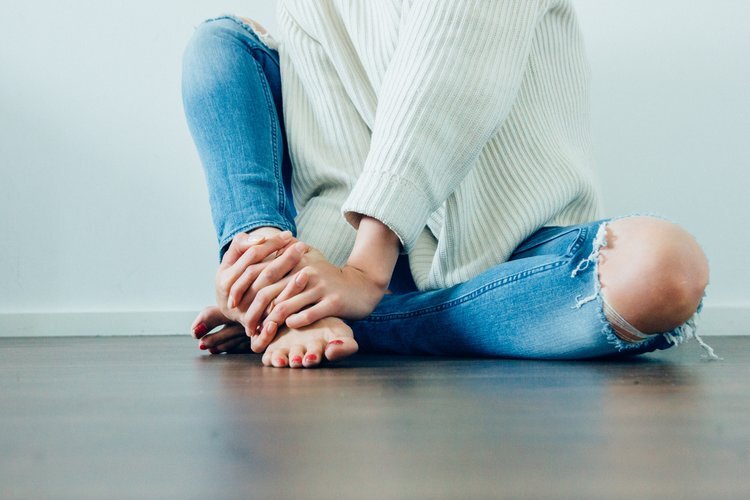
My SIBO Symptoms
I remember my digestion feeling totally fine up until I needed to use a round of antibiotics to get rid of a UTI.
I have Celiac Disease that was very well controlled by a strict gluten-free diet.
But, once the SIBO symptoms started coming, my days of easy digestion were over.
Some of my first SIBO symptoms were:
- feeling exhausted after meals
- not being able to sleep through the night
- constipation
- intestinal pain and cramping
- bloating
- gas
Now, unfortunately, these are the symptoms for so many digestive issues. So testing is so important when it comes to actually figuring out what’s going on in your gut.
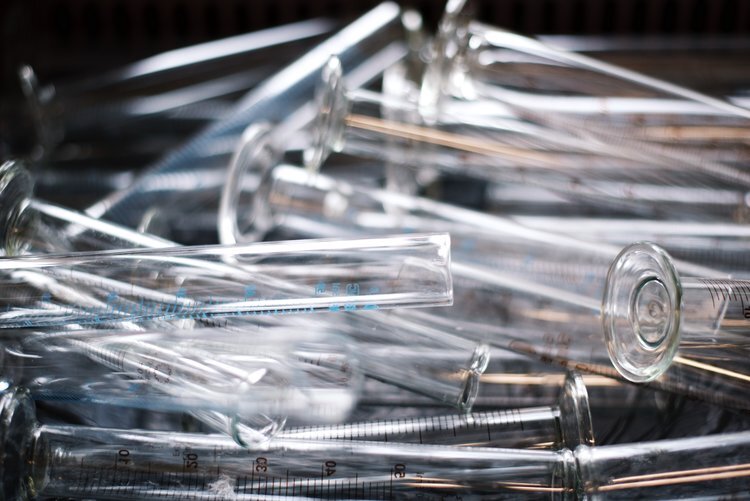
How I Got Tested for SIBO
This is one of the parts of my SIBO story that I wish I could do over.
The nutritionist that I first started working with ran a stool test to check for a general bacterial imbalance in my gut (known as dysbiosis).
I’m a huge fan of these types of tests because they can tell you so much about what’s going on inside your gut.
However, the one thing they’re not great for is telling you if you have SIBO.
Unfortunately, this stool test is how I was first diagnosed with SIBO. I was brand new to the functional medicine world, so I had no idea that you couldn’t diagnose SIBO from a stool test.
My biggest regret in my SIBO journey was not taking a breath test BEFORE I started treatments.
I had no baseline to go back to in order to determine if what I was doing was actually lowering my SIBO gas levels.
So, I was originally diagnosed with SIBO through a stool test (not accurate), but then did take several breath tests later on that showed I was positive for SIBO.
So perhaps the nutritionist knew what she was looking for in the stool test, or maybe she just got lucky.
Either way, it was clear that SIBO was what was causing my symptoms.

What SIBO Diets I Used
What diet you should use while dealing with SIBO is always a hot topic.
In my opinion, there is no perfect SIBO diet for everyone. And just following one diet blindly will not get you the symptomatic relief you’re looking for.
I recommend starting by determining the foods that make you not feel so great and then choosing a diet template that removes those foods.
Also, these diets are guidelines not hard and fast rules. I’ve found the most success when I just used a few SIBO diets as guidelines and then just avoided the foods that I knew made my symptoms worse.
Diet alone will not cure or cause SIBO. So, picking the perfect SIBO diet actually isn’t as important as it’s made out to be.
With all that being said, the SIBO diets I found the most success with were the Specific Carbohydrate Diet (SCD) and the low-FODMAP diet.
FODMAPs were definitely a trigger for me, with the worst offenders being apples, garlic, and onions.
Removing those foods helped reduce my symptoms, but since my SIBO was a difficult case I ended up eliminating those foods for far too long.
Diets like low-FODMAP and SCD are NOT meant to be used long-term. Really they should only be followed for 2-6 months while to root cause of why you need to remove those foods is being corrected.
I ended up staying on the low-FODMAP diet for two and a half years. And the main problem with that was those foods that are removed on the low-FODMAP diet are the ones that feed your gut bacteria.
Which makes sense when you have an overgrowth. You don’t want to feed the overgrowth and cause symptoms.
But, while you’re busy not feeding the overgrown bacteria, you’re also not feeding the beneficial bacteria that are in your large intestine.
I believe that this lead to me developing a lack of good bacteria in my gut, causing other health issues.

Getting Off the SIBO Diets
Like I said before, the goal with restrictive SIBO diets is not to be on them long-term. It’s to use them just to reduce symptoms while you’re addressing the overgrowth.
Unfortunately, my overgrowth was difficult to get rid of, so I was on these diets for longer than I should have been.
And it’s not that I wanted to be on these diets for an extended period of time. Nope. It was because any deviation from them would cause an increase in symptoms.
But what really changed all of that for me was getting into ketosis.
I’m definitely not recommending that everyone with SIBO start eating high fat and low carb, but that was what worked for me.
Here’s an article I wrote a while ago addressing my experience on the ketogenic diet if you’re interested.
It’s been shown that eating a low carbohydrate diet, like keto, reduces the overall quantity of gut bacteria.
So I think, in my case, the ketogenic diet reduced my carb intake enough to decrease the overall bacterial load in my small intestine. Which in turn allowed me to start eating high-FODMAP containing foods again.
Although this diet helped me reduce my abundance of gut bacteria, the ketogenic diet isn’t recommended long-term for gut health for that exact reason.
Our gut bugs need carbohydrates to survive, and the ketogenic diet just doesn’t allow for enough carbs to be consumed to support a healthy level of gut bacteria.
After I realized that the keto diet just wasn’t for me, I gradually made the switch to a high-carb Paleo diet.
Which was only possible after I used Xifaxan and Neomycin to successfully treat my SIBO.
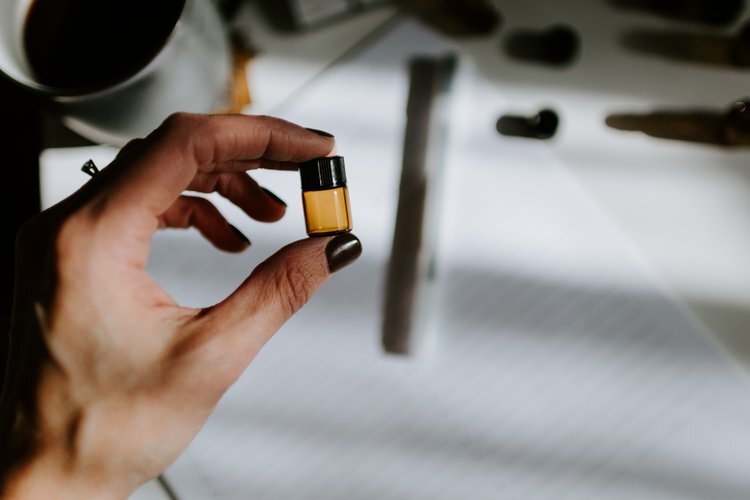
What SIBO Treatments I Tried
When I say I’ve tried pretty much every SIBO treatment out there, I’m 100% telling the truth.
From the time I first got diagnosed with SIBO in 2015 to when I finally got rid of it two and a half years later I tried almost everything imaginable.
My first attempts at herbal antibiotics really only made me feel worse.
My cramping was worse, my sleep was worse. They just weren’t working.
And now looking back, my gut was just too much of a mess for any healing at all to take place.
Before working to get rid of the overgrowth, I needed to take a step back and work on healing my gut.
This meant taking gut healing supplements like l-glutamine. It meant staying on my SIBO diet. It meant trying to reduce my stress levels.
All so that I could have a strong framework that would facilitate healing.
Even once I had gotten my gut to a better place, all of my problems still weren’t solved.
Now the SIBO treatments didn’t make me feel worse, they just didn’t make me feel any better.
Here’s a list of all of the herbal treatments I tried.
- Biocidin
- Oregano oil
- Allicin
- Berberine
- FC Cidal and Dysbiocide
- Candibactin-AR
I ended up spending way too much money and not feeling a whole lot better.
Plus, my breath test results weren’t improving either. The herbal antibiotics just weren’t working for me.
In between herbal treatments I also tried taking Xifaxan.
I tried both Xifaxan just by itself and Xifaxan along with partially hydrolyzed guar gum (PHGG). Here’s a link to the study that shows PHGG makes Xifaxan more effective at normalizing SIBO breath tests.
The only thing that happened when I tried those treatment methods was that I got incredibly bloated from taking the PHGG.
But, at that point, I wasn’t really expecting a different outcome.
My last resort treatment option was to use both Xifaxan and Neomycin.
I knew that the Neomycin had some potentially harmful side effects and that it wasn’t as safe of an antibiotic as Xifaxan was.
But, I was getting to the point where I had tried just about everything else and wasn’t sure where to go next.
So, one round of Xifaxan and Neomycin later and I’m 99% sure my SIBO is no more (I didn’t retest, which I wrote about here).
But after years of treating, I was finally free of my nagging SIBO symptoms that had started to take over my life!

What are Xifaxan and Neomycin
Xifaxan and Neomycin are both prescription antibiotics that act in the gut.
Xifaxan is a rather benign antibiotic, in that it is only activated in the presence of bile. Meaning that the only organ that will feel its effects is the small intestine.
Which makes it the perfect antibiotic for treating SIBO.
Neomycin, on the other hand, is used to prevent infection of the intestines after bowel surgery.
It is used off-label for the treatment of SIBO.
Neomycin comes with a list of potential side effects like hearing loss, c diff, yeast overgrowths, nausea, and diarrhea.
It’s not an antibiotic to be playing around with.
How to Treat SIBO With Xifaxan and Neomycin
Together, Xifaxan and Neomycin have been shown to be the most effective treatment for methane dominant SIBO.
The treatment protocol that was used in that study is the one that is used by all of the medical professionals I’ve come across who use these two antibiotics.
When treating SIBO with Xifaxan and Neomycin you typically take 500mg of Neomycin twice a day and then 400mg of Xifaxan three times a day for 10 days.
To make it easy on myself, I just took the Xifaxan with every meal and the Neomycin with just breakfast and dinner.
Like with other SIBO treatments, one round of antibiotics is often not enough to remove the entire overgrowth.
However, since Neomycin has such strong side effects, it’s generally recommended that patients don’t do more than two rounds of treatment with these antibiotics.
The Cost of Xifaxan and Neomycin
Cost is, unfortunately, the most prohibitive factor when it comes to most people using Xifaxan and Neomycin for SIBO treatment.
Since Xifaxan is being a new drug to the market, it’s still protected under its patent. Which means no generic forms of this antibiotic have been able to be made in the United States.
And because of that, the cost for a 10 day supply of Xifaxan can range from $500 to $2,000, depending on your insurance.
But, don’t take my word for it! If you and your doctor think Xifaxan is the right treatment plan for you, definitely check with your pharmacy to determine the actual price for you! You could be one of the fortunate ones where insurance will cover the majority of the cost.
If you’re not on the fortunate end of the Xifaxan cost spectrum, like I was, all hope is not lost.
Here’s a link to a manufacturer’s coupon that can potentially drastically reduce the cost of Xifaxan for you.
I was able to use this card and it thankfully brought the cost down to only $10. A true blessing.
In my experience, this coupon card will only work for your first fill of the antibiotic. So if you need more than one round of treatment with Xifaxan, you might have to pay a little more.
Neomycin is much, much more cost effective than the name-brand counterpart. I think my 10-day prescription only cost me around $20.
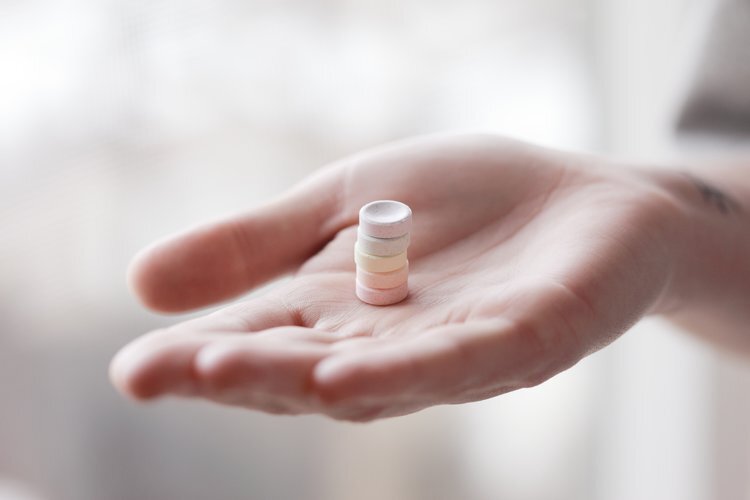
My Experience with Xifaxan and Neomycin
Now, please take my experience with a grain of salt. This is only the experience of one person.
And I personally know other people who have had drastically different experiences than me while on the same SIBO treatment protocol.
It’s up to you to be your own best health advocate. And always consult with and trust your doctor’s advice on what’s right for your health situation over what you read on the internet.
With that being said, the 10 days I was on Xifaxan and Neomycin were the worst I had felt in the entire time I had SIBO.
But, I would probably do it again, just maybe a little differently, since it was the one thing that finally got rid of those stubborn, overgrown bacteria.
My Symptoms on Xifaxan and Neomycin
Remember, I had been on Xifaxan previously a few times with no symptoms at all.
So, I fully believe that all of the symptoms I experienced during this round of treatment were from the Neomycin.
My symptoms started after the very first dose and lasted way beyond when I stopped taking the antibiotics.
While using Xifaxan and Neomycin I experienced the following symptoms:
- diarrhea
- nausea
- loss of appetite
- yeast infection
Since my SIBO symptoms had always been strictly constipation, having diarrhea was a totally new experience for me.
I also ended up losing a lot of weight since I just had no appetite at all. I couldn’t finish my meals.
And eating made me incredibly nauseous.
Plus, after the first day of treatment, I felt as though I was getting a vaginal yeast infection. A definite sign that the antibiotics were destroying ALL my gut bacteria, not just the ones in my small intestine.
It was a bad experience all around.
And unfortunately, these symptoms didn’t subside when I stopped the treatment like I thought they would.
Nope. I stayed nauseous, unable to eat large meals, and had terrible diarrhea for months after I finished treatment.
These symptoms weren’t as severe as they were when I was taking the antibiotics, but they were still present.
What I Ate During my Treatment with Xifaxan and Neomycin
During treatment, I kept my diet similar to what I had been eating previously.
Which was a moderate carb Paleo diet that included high-FODMAP foods and white rice.
Like I said before, in my opinion, diet does not have any effect on the effectiveness of a SIBO treatment.
Diet cannot make your SIBO better, and it cannot make it worse. It can only control the symptoms.
I know there are differing opinions on diet and SIBO out there, but from my experience, diet isn’t as important as it’s made out to be.
What I Did After the Round of Xifaxan and Neomycin
After I finished my round of treatment I was still feeling pretty awful.
I continued to eat the same diet I ate before and during treatment. However, I noticed that I could no longer tolerate fats.
My symptoms got progressively worse until I had a period of time about a month after I took my last dose. At that point, all I could eat was steamed potatoes and chicken breast.
This was likely a result of the effects of the Neomycin on my liver, which impaired my bile flow and ability to detox.
I wrote a great article on the importance of detox during gut treatments if you’re interested in learning about this further.
As far as methods to prevent SIBO relapse, I used Iberogast. I had used this supplement previously and liked how I felt while taking it, so I used it again here.
When using Iberogast as a prokinetic you typically take anywhere from 20-60 drops at night before bed.
I also decided to supplement with the probiotic L. reuteri probiotic in the form of Biogaia Drops.
There is a study that shows this specific strain of probiotics to be effective in significantly decreasing the production of methane gas in constipated patients.
I figured that if the Xifaxan and Neomycin treatment hadn’t gotten rid of all the methane-producing bacteria in my gut, I could at least try this relatively new method of reducing my numbers.
Also, since I knew that the antibiotic treatment was harsh on my gut, I made an effort to supplement with probiotic-rich foods.
During the time after my SIBO treatment, I ate homemade yogurt, sauerkraut, and kefir almost every day in an attempt to help support my gut health and replenish my microbiome.
Since my health went completely downhill as a result of using the Xifaxan and Neomycin, most of my good intentioned plans to prevent relapse after treatment ended abruptly.
My focus then became figuring out why I couldn’t tolerate fatty foods, was having terrible diarrhea, and just felt completely awful.
But, as I said earlier, I would still do the same SIBO treatment over again. I would just want to prepare myself better for the side effects of using those strong antibiotics.
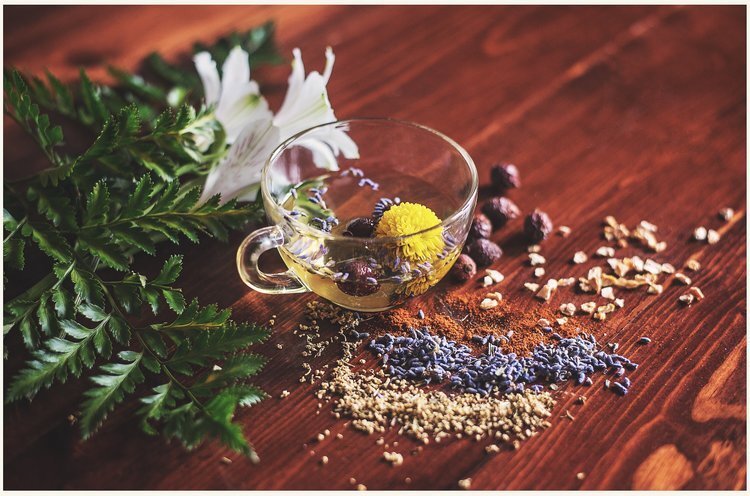
How Prescription Antibiotics Compare to Herbals
Treating SIBO with herbal antibiotics compared to pharmaceutical ones are two very different routes.
To make it simple, I’m just going to share the benefits and downsides of both methods.
Benefits of using herbal antibiotics:
– A more gentle approach without many serious side effects
– A natural approach for anyone against pharmaceuticals
– Some combinations are proven to be as effective as pharmaceuticals
Benefits of using prescription antibiotics:
– Can be free if covered by insurance
– Protocol length is usually not more than a few weeks
– Proven effective in multiple studies
Downsides of using herbal antibiotics:
– All costs are out of pocket and can add up quickly
– Protocols can be as long as three months
Downsides of using prescription antibiotics:
– Can have some serious side effects
– If not covered by insurance, can be extremely expensive
Both methods of combating SIBO have been proven to be effective.
Whether you end up using prescription or herbal antibiotics is completely dependent on you, your case of SIBO, and the discretion of the medical professional you’re working with.
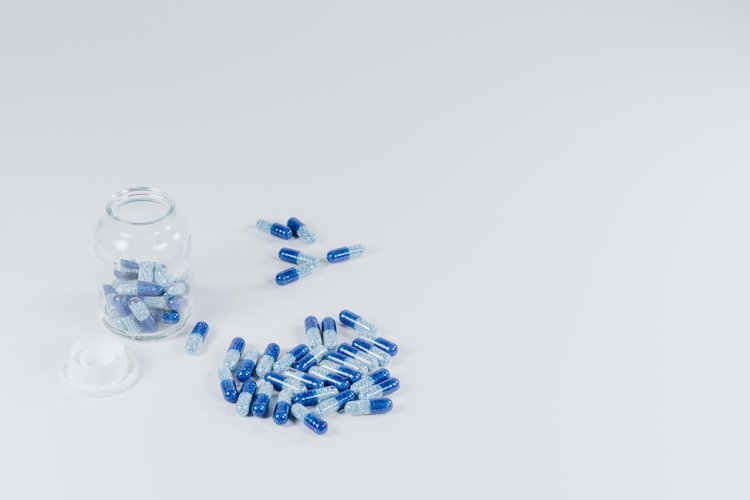
The Pros and Cons to Using Xifaxan and Neomycin to Treat SIBO
If you have methane dominant SIBO and have tried just about everything else, using Xifaxan and Neomycin is often the next logical step.
This was the case for me, and I have no regrets in choosing this treatment method.
Although I haven’t retested since then, I do believe that my SIBO is now gone as a result of using these antibiotics.
However, like most things in life, this choice to use Xifaxan and Neomycin was not without its consequences.
I believe that most of my symptoms that developed as a result of using the Neomycin were because I had a history of years and years of herbal antimicrobial use coupled with persistent gut infections.
This combination likely overloaded my already burdened liver, adrenals, and thyroid. Sending me into a spiral of new symptom after new symptom.
Powerful antibiotics, like Neomycin, often cause dysbiotic shifts in your microbiome. Which leave you with not enough good gut bugs, and very likely an overgrowth of pathogenic ones.
This imbalance of gut bacteria can lead to a host of health issues. Everything from hormonal imbalances to parasites and other overgrowths can be caused by taking antibiotics.
I took a GI MAP stool test a few months after I finished my Xifaxan and Neomycin treatment. The results showed that I had a large number of potentially pathogenic bacteria and two parasites!
Both of which could be attributed to my new symptoms.
I had also developed gastritis and acid reflux a few months after finishing my course of antibiotics.
These were two symptoms I had NEVER experienced before. So I have to believe that they were a result of the bacterial imbalance caused by the antibiotics.
It was an interesting situation that I was in.
A round of antibiotics to treat a urinary tract infection years earlier played a role in me getting SIBO.
And a round of antibiotics played a role in finally getting rid of my SIBO. But not without other significant side effects.

My Overall Thoughts on Xifaxan and Neomycin
Overall, I would say that my experience using Xifaxan and Neomycin was a negative one.
However, if I had to make the decision whether or not to use them again to treat SIBO I would still go through with it.
I would definitely be much more cautious about caring for the health of my other body systems before, during, and after treatment.
Focusing on liver health and detoxification support is critical when dealing with any sort of gut imbalance or overgrowth.
Removing the toxins and waste produced from rounds and rounds of antibiotics is a full-time job. And I believe that some of my symptoms were a result of a liver and gallbladder that had just had enough.
I would also focus on supporting my adrenals and thyroid throughout the entire SIBO treatment process.
In my SIBO journey, I too often chose to do restrictive diets that heavily taxed my adrenals and thyroid, without a second thought.
This narrow focus most likely lead to the health issues and adrenal burnout that accompanied my final round of SIBO treatment.
And, as with any health-related decision, please consult with a trusted medical professional before making any decisions.
I am so happy to provide you with free resources detailing my experience, but they in no way substitute for the advice of a trained medical professional.
I truly hope this post was informative and will provide you with the knowledge and tools that you need to take the next step in your gut healing journey.




